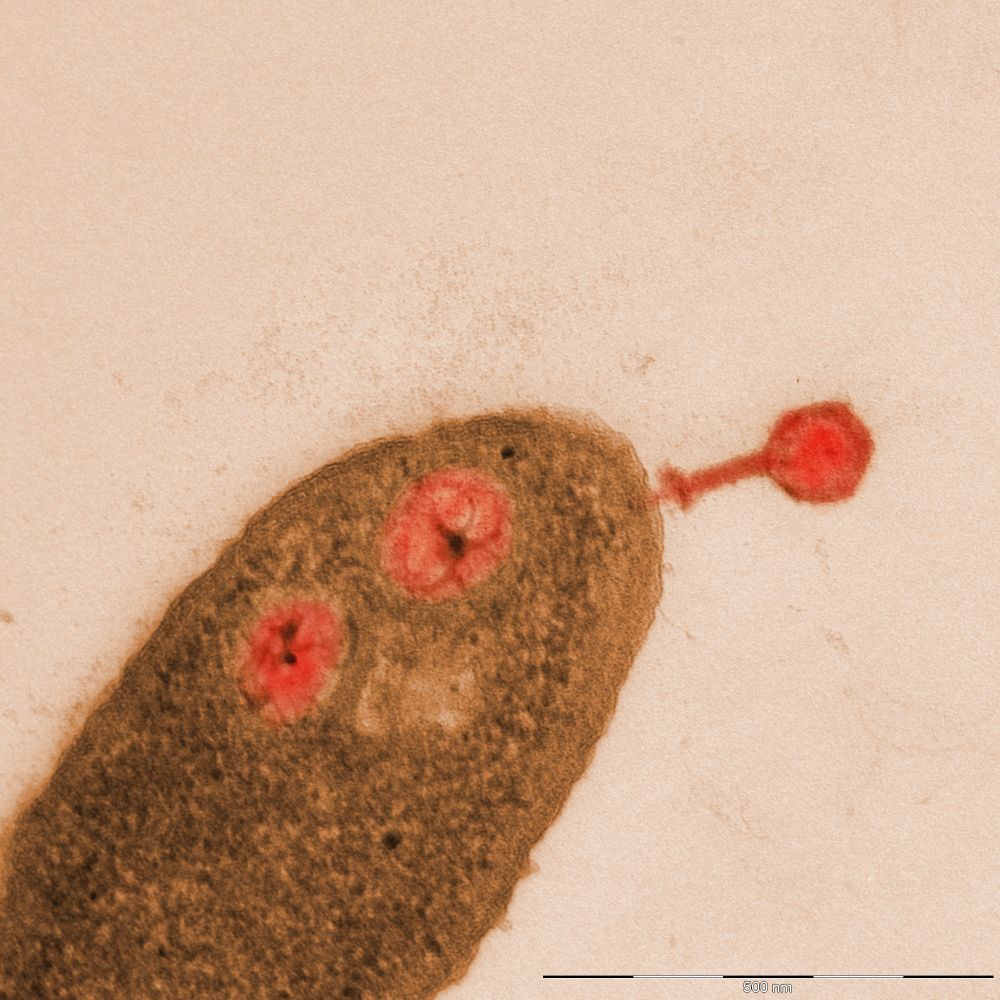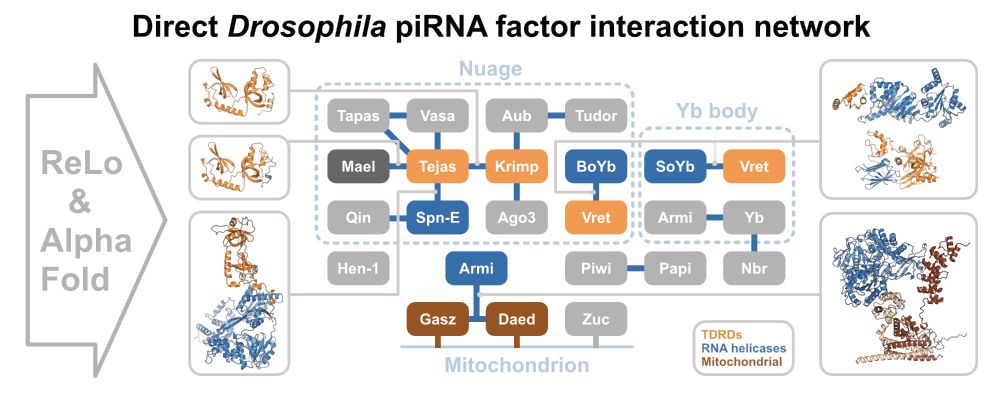
@jorg-vogel-lab.bsky.social @helmholtz-hiri.bsky.social @helmholtzhzi.bsky.social @uni-wuerzburg.de
print: www.nature.com/articles/s41...
highlight: www.nature.com/articles/s41...
briefing: www.nature.com/articles/d41...

🧬 Deadline: November 26
www.helmholtz-hzi.de/en/career/jo...
www.helmholtz-hzi.de/en/career/jo...
🧬 Deadline: November 26
www.helmholtz-hzi.de/en/career/jo...
www.helmholtz-hzi.de/en/career/jo...
Our HIDEN-SEQ links the "dark matter" genes of your favorite phage to any selectable phenotype, guiding the path from fun observations to molecular mechanisms.
A thread 1/8

Our HIDEN-SEQ links the "dark matter" genes of your favorite phage to any selectable phenotype, guiding the path from fun observations to molecular mechanisms.
A thread 1/8
@jorg-vogel-lab.bsky.social @jenshoer.bsky.social @gerovac.bsky.social @jangogarten.bsky.social #WAAW2025

@jorg-vogel-lab.bsky.social @jenshoer.bsky.social @gerovac.bsky.social @jangogarten.bsky.social #WAAW2025
Zur #Weltantibiotikawoche zeigen unsere Forschenden, dass Hoffnung in einem uralten biologischen Prinzip liegen könnte: #Bakteriophagen - #Viren, die gezielt Bakterien angreifen. #WAAW2025 www.helmholtz-hzi.de/media-center...

Zur #Weltantibiotikawoche zeigen unsere Forschenden, dass Hoffnung in einem uralten biologischen Prinzip liegen könnte: #Bakteriophagen - #Viren, die gezielt Bakterien angreifen. #WAAW2025 www.helmholtz-hzi.de/media-center...


www.nature.com/articles/s41...

www.nature.com/articles/s41...
@jorg-vogel-lab.bsky.social @helmholtz-hiri.bsky.social @helmholtzhzi.bsky.social @uni-wuerzburg.de
print: www.nature.com/articles/s41...
highlight: www.nature.com/articles/s41...
briefing: www.nature.com/articles/d41...

@jorg-vogel-lab.bsky.social @helmholtz-hiri.bsky.social @helmholtzhzi.bsky.social @uni-wuerzburg.de
print: www.nature.com/articles/s41...
highlight: www.nature.com/articles/s41...
briefing: www.nature.com/articles/d41...
🔗 bit.ly/4hujsRG
@livuninews.bsky.social | #TeamLivUni

#RNA
www.nature.com/articles/s41...

#RNA
www.nature.com/articles/s41...
www.pnas.org/doi/10.1073/...

microLIFE review by @lizmarialuke.bsky.social and Kai Papenfort at @uni-jena.de
academic.oup.com/microlife/ad...

microLIFE review by @lizmarialuke.bsky.social and Kai Papenfort at @uni-jena.de
academic.oup.com/microlife/ad...

Using ReLo and AlphaFold, we described a network of interactions between Drosophila piRNA pathway factors suggesting new links how they coordinate to ensure transposon silencing and genome integrity.
academic.oup.com/nar/article/...

Using ReLo and AlphaFold, we described a network of interactions between Drosophila piRNA pathway factors suggesting new links how they coordinate to ensure transposon silencing and genome integrity.
academic.oup.com/nar/article/...
Today, we report the discovery of telomerase homologs in a family of antiviral RTs, revealing an unexpected evolutionary origin in bacteria.
www.biorxiv.org/content/10.1...

Today, we report the discovery of telomerase homologs in a family of antiviral RTs, revealing an unexpected evolutionary origin in bacteria.
www.biorxiv.org/content/10.1...
nature.com/articles/s41...
PhD graduate and now post-doc Sofia Dahlman, along with co-senior author Sam Forster from The Hudson and other researchers from our lab and others.

nature.com/articles/s41...
PhD graduate and now post-doc Sofia Dahlman, along with co-senior author Sam Forster from The Hudson and other researchers from our lab and others.

www.biorxiv.org/content/10.1...
#teamtomo

www.biorxiv.org/content/10.1...
#teamtomo


We have an opening for a junior group leader position in „Phage Biology & Biotechnology“.
www.fz-juelich.de/de/karriere/...
Interested candidates are encouraged to contact me via email for further details.
@spp2330.bsky.social; @mibinet.bsky.social
We have an opening for a junior group leader position in „Phage Biology & Biotechnology“.
www.fz-juelich.de/de/karriere/...
Interested candidates are encouraged to contact me via email for further details.
@spp2330.bsky.social; @mibinet.bsky.social
We 👉🏻@nanamikubota.bsky.social show that these Pf phages can go ROGUE.
"Filamentous cheater phages drive bacterial and phage populations to lower fitness"
🔗 authors.elsevier.com/c/1lt5I3QW8S...

We 👉🏻@nanamikubota.bsky.social show that these Pf phages can go ROGUE.
"Filamentous cheater phages drive bacterial and phage populations to lower fitness"
🔗 authors.elsevier.com/c/1lt5I3QW8S...
~27,000 predicted viral protein monomers & homodimers
Conserved folds across bacteria, archaea & eukaryotic viruses
New toxin–antitoxin system KreTA uncovered
Vast “functional darkness” remains uncharted
www.science.org/doi/10.1126/...

~27,000 predicted viral protein monomers & homodimers
Conserved folds across bacteria, archaea & eukaryotic viruses
New toxin–antitoxin system KreTA uncovered
Vast “functional darkness” remains uncharted
www.science.org/doi/10.1126/...
Check out @erinedoherty.bsky.social and my work from @doudna-lab.bsky.social lab here:
www.nature.com/articles/s41...

Check out @erinedoherty.bsky.social and my work from @doudna-lab.bsky.social lab here:
www.nature.com/articles/s41...

